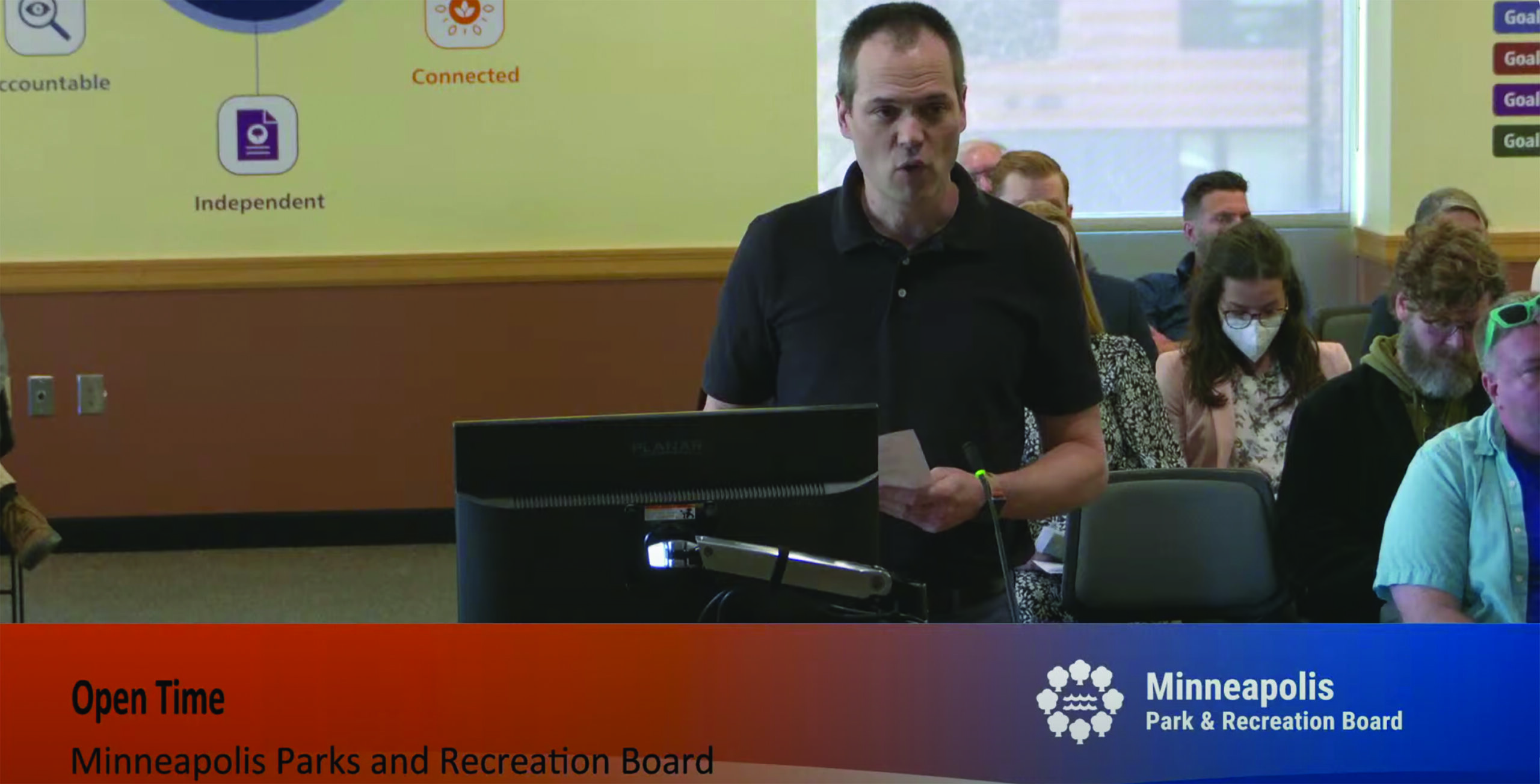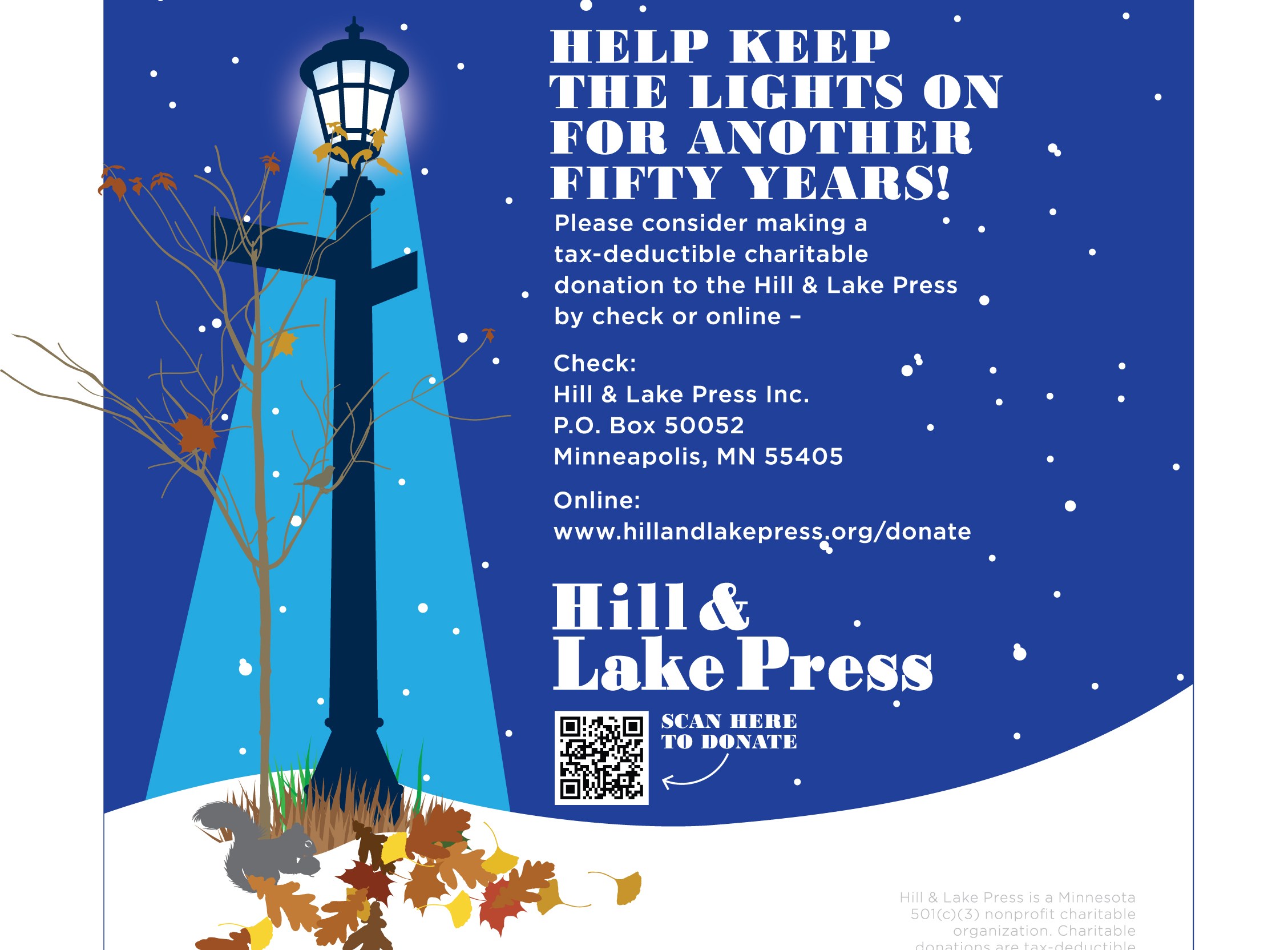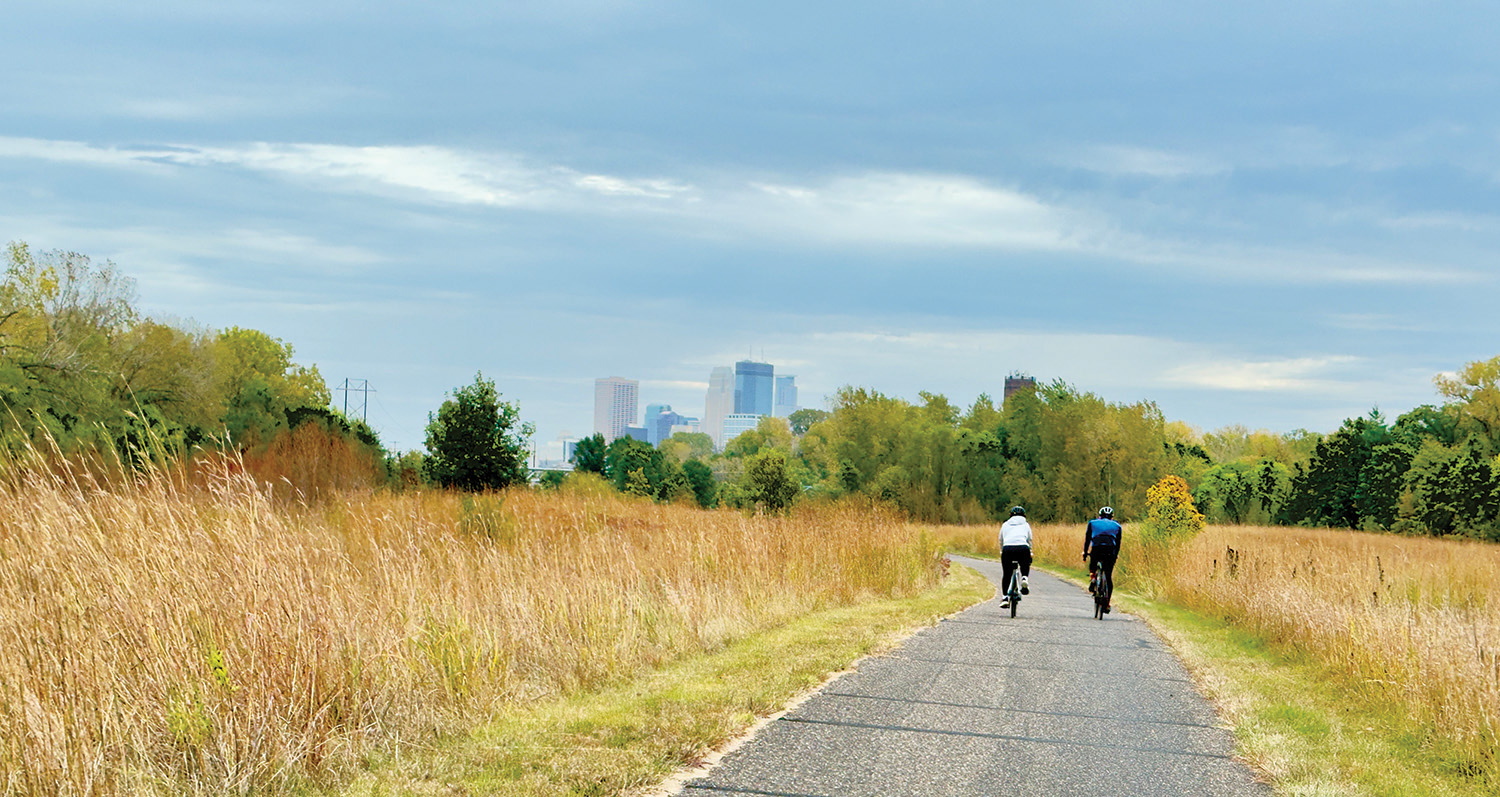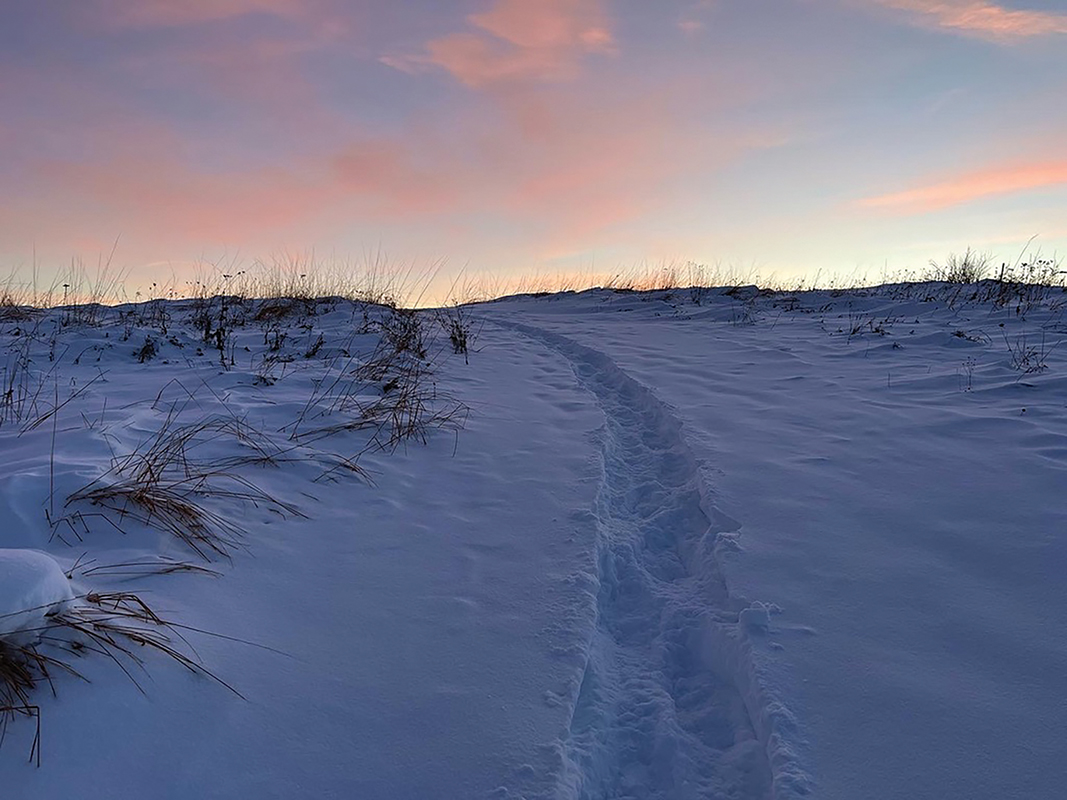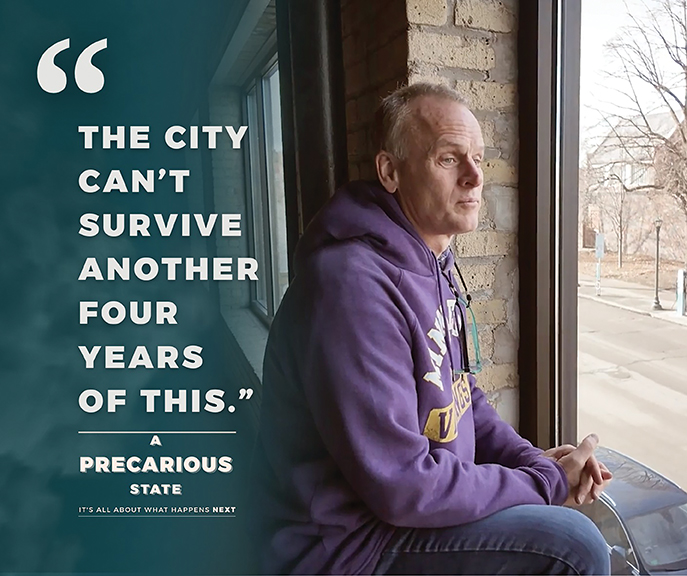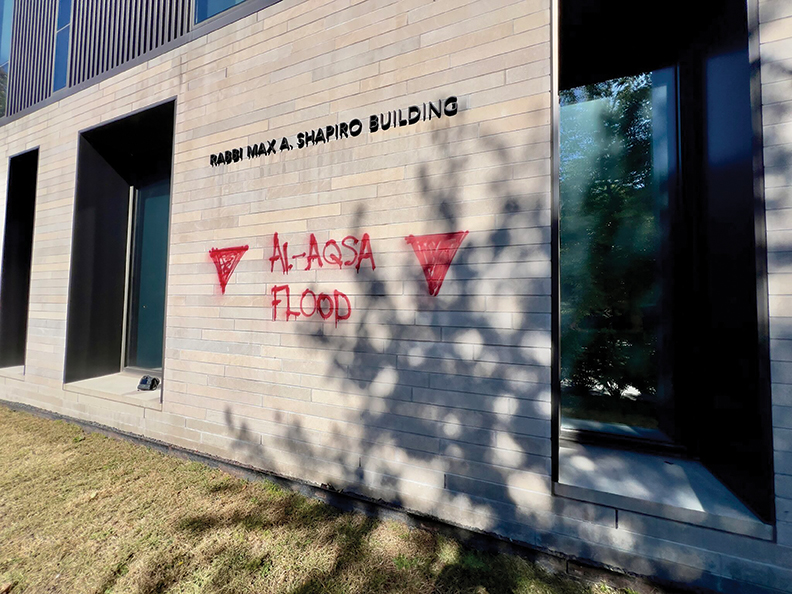On April 24 and May 7, the Minneapolis Park and Recreation Board took votes to reexamine the plans in its Southwest Service Area Master Plan for closing portions of the existing roadways through The Mall Park in Uptown.
The decision was taken in response to safety concerns expressed by several commissioners, including Planning Committee Chair Cathy Abene and local commissioner Elizabeth Shaffer, and followed close on the heels of concerns expressed by area neighbors related to safety, parking and aesthetics.
As covered in previous Hill & Lake Press articles (see December 2023, March 2024), the Master Plan itself was approved by the Park Board on November 4, 2020, during the height of the pandemic, and covers 42 neighborhood parks, including The Mall.
Along with a relocated walkway, urban agriculture space, and the addition of native plantings, plans for The Mall notably included a proposal to close portions of the one-way roads that line the park, and the addition of a shared-use, permeable “woonerf” for the block nearest the Walker Library, which would replace the more traditional U-shaped roadway that presently exists. A woonerf, which translates as a "street for living," is a Dutch term for a common space created to be shared by pedestrians, bicyclists, and low-speed motor vehicles. They are typically streets without curbs and sidewalks, and vehicles are slowed by placing trees, planters, parking areas, and other obstacles in the street.
At the April 24 Planning Committee meeting, discussion of the proposed closures started during the public comment period. Hill & Lake Press editor Craig Wilson was the first to speak.
Wilson noted that he had been a member of the Community Advisory Committee (CAC) during the master planning process, and stated he had “deep concerns” about the proposed roadway changes. Wilson noted the process was “hectic,” with 42 parks being planned in just 16 meetings, which amounted to roughly 30 minutes per park. Wilson said he expected the Park Board to engage in more thorough professional vetting after the fact, such as traffic studies, and also noted the area had changed in ways not anticipated when the CAC concluded its work in 2019.
Mike Erlandson, chair of the East Isles Neighborhood Association (EINA), spoke next, arguing it would be a “grave mistake” to move forward with the proposed closures, which local residents and the EINA oppose.
Erlandson’s concerns were echoed by eight other area residents, a mixture of homeowners and renters, all of whom spoke in opposition to the current plan. The need for parking was mentioned most frequently, along with appreciation for the park as currently laid out.
One speaker noted that approximately 550 area residents had signed an online petition in opposition to the plan.

During the commissioners’ discussion, emergency vehicle access was at the fore, particularly as respects fire access to the pre-war apartment buildings along the southern boundary of the park. Commissioner Abene expressed concern that the existing roadway may be the only practical fire access to some of the buildings, and these concerns were echoed strongly by At Large Commissioner Charles Rucker, who is also a first responder and works for the Minneapolis Fire Department.
Rucker said he had visited the site the previous weekend, primarily to assess whether it would be adequately accessible to fire trucks in the event of a fire at one of the neighboring apartments.
There was “no way” emergency access under the proposed plan would be adequate, Rucker said, citing the prewar apartments’ balloon construction, which lacks fire stops, and noting that every second counts when responding to such fires. Rucker said that any fire department response would involve multiple vehicles, which could not be adequately accommodated with the proposed closures.
Rucker also said he had spoken with Minneapolis Fire Chief and Marshal Bryan Tyner, who said he was “shocked” and had “no idea” these changes had been proposed. Tyner submitted a letter, offered into the record by Rucker, expressing his concern that emergency access would be inadequate, and noting that the area already presents challenges to response times due to its unique geography and traffic patterns.
At Large Commissioner Tom Olsen spoke in support of the planned closures, arguing that the Master Plan for the area embodies the Park Board’s overarching values and priorities.
Olsen did not directly rebut the letter submitted by Chief Tyner but asserted that the plan did provide adequate emergency vehicle access because it did not change access for the southern roadway that immediately borders the apartments.
A review of the site map in the Master Plan, however, shows that it does propose closing half-block sections of that southern road immediately east and west of James Avenue, eliminating the road’s continuous flow and making side streets the primary access point for most of the apartments.
Also, despite earlier comments from multiple renters, Olsen asserted that opposition to the plan came from “very motivated, very connected, very privileged people” who didn’t like the CAC process, in remarks that drew rebukes from both Commissioners Abene and Thompson.
The Planning Committee’s overall discussion of this issue arose in the context of an amendment to a resolution granting an easement to the Metropolitan Council to perform necessary sewer work underneath The Mall itself.
The amendment from Commissioners Shaffer and Abene passed on a voice vote, with only Commissioner Olsen voting against, and the full amended resolution then passed the committee with no audible dissent.
The amended resolution came before the full board at its next regular meeting on May 7, and passed on a vote of 7-2.
Commissioners and staff noted that work with the Fire Department and City Engineer’s office was already in progress; the matter may come up for a more definitive vote by the end of May.
Finally, as with the Planning Committee meeting, local residents spoke during the public comment period, uniformly in favour of preserving the park’s current configuration. One speaker stated that the online petition to preserve the park had now garnered over 700 signatures.
